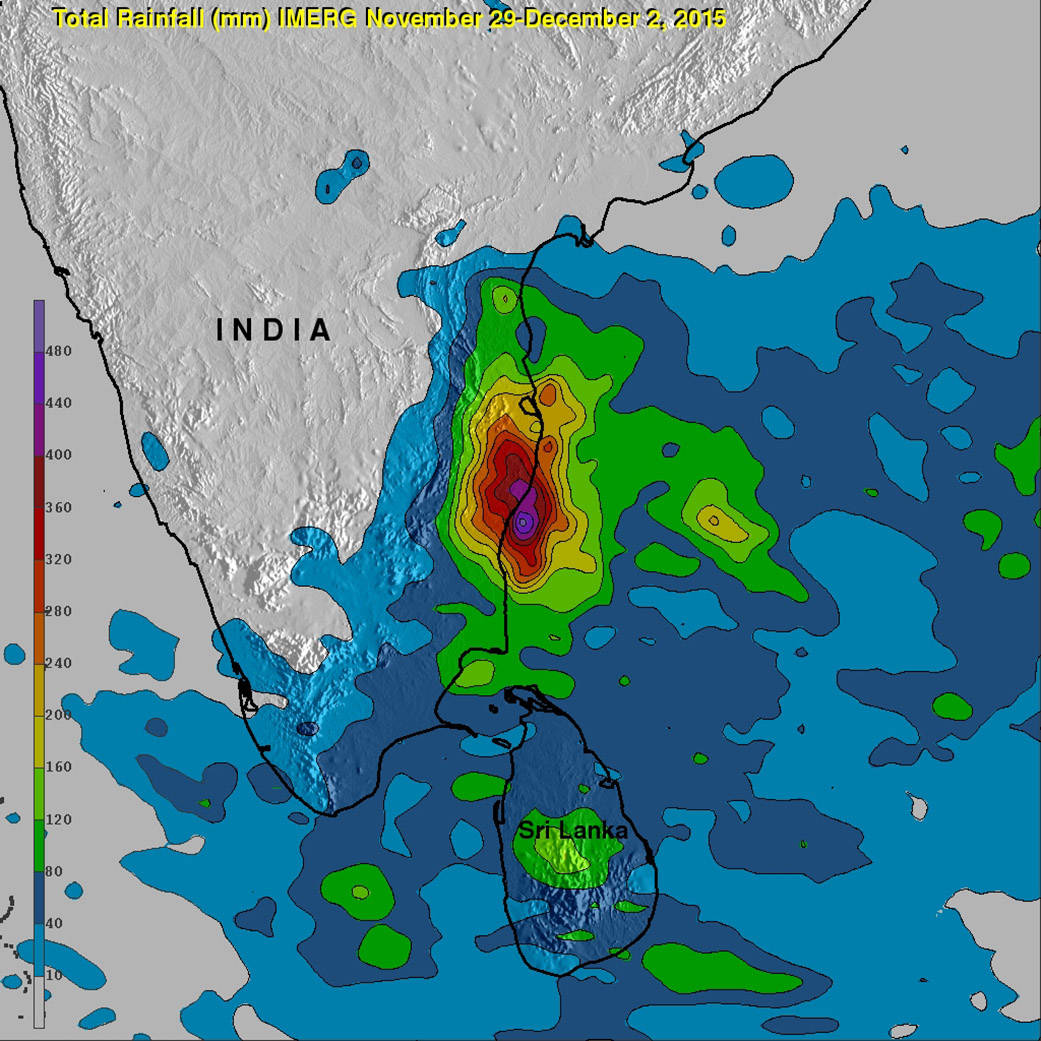
Extremely heavy rainfall over southeastern India caused deadly flooding in the middle of the month of November. The Global Precipitation Measurement or GPM mission satellite provided rainfall data on the extreme rainfall.
Record setting rainfall has again caused deadly flooding in southern India. The latest deluge started at the end of November 2015 and generated flooding that has resulted in the reported deaths of 188 people. Reports indicated that the Chennai airport was water logged and the runway was submerged.
NASA’s Integrated Multi-satellite Retrievals for GPM (IMERG) combines all data from 12 satellites into a continuously updated global map of rainfall at half hourly intervals. At NASA’s Goddard Space Flight Center in Greenbelt, Maryland, the rainfall accumulation analysis was computed from data generated by IMERG during the period from November 29, 2015 to December 2, 2015. This IMERG analysis showed that unusually heavy rainfall totals of over 400 mm (15.7 inches) fell over southeastern India. Even higher totals of up to 490 mm (19.3 inches) were seen in the Bay of Bengal just off the Indian coast.
The satellites that contribute data to IMERG include DMSPs from the U.S. Department of Defense, GCOM-W from the Japan Aerospace Exploration Agency (JAXA), Megha-Tropiques from the Centre National D’etudies Spatiales (CNES) and Indian Space Research Organization (ISRO), NOAA series from the National Oceanic and Atmospheric Administration (NOAA), Suomi-NPP from NOAA-NASA, and MetOps from the European Organization for the Exploitation of Meteorological Satellites (EUMETSAT). All of the instruments (radiometers) onboard the constellation partners are inter-calibrated with information from the GPM Core Observatory’s GPM Microwave Imager (GMI) and Dual-frequency Precipitation Radar (DPR).
For more information about GPM, visit: www.nasa.go/gpm
Hal Pierce
SSAI / NASA’s Goddard Space Flight Center

























